By Gabriella Livingstone and Nina Obiar
Climate change is a growing issue in wildlife conservation. Throughout our mini blog series, we’ve discussed some pressing climate-related issues facing Alberta’s birds. A common theme throughout these blogs is that human actions are a cause of or exacerbate the impacts of climate change, and therefore, must be taken into consideration with conservation approaches.
Humans have greatly modified wildlife habitats through land-use change as well as through human-induced climate change. This had led to widespread negative impacts on wildlife populations. The outcome of human-wildlife conflict “extends beyond populations to affect entire ecosystems” (10).1 With climate change increasing human-wildlife conflict, effective conservation measures will need to consider means of human-wildlife co- existence.
What role does climate change play in human-wildlife conflict?
Human-wildlife conflicts have wide-ranging implications for biodiversity, wildlife health, and human health, and climate change is expected to cause more frequent and intense human- wildlife conflicts.2 A clear example of this relationship often occurs during or after an extreme climatic event such as the warming of the ocean increasing the number of marine wildlife injured by fishing nets.3 Climate change and extreme climatic events often push wildlife out of their natural habitats, pushing them into urban areas, while simultaneously human actions lead us to further encroach on wildlife habitats.
What role do we play?
Human-wildlife conflict is not always a direct interaction between the two. Rather, human-wildlife conflict also encompasses the negative impacts of human actions.4 For instance, as our previous blogs have explored, not only are our actions causing climate change but the impacts of climate change on wildlife are further exacerbated by anthropogenic pressures.5 Human disturbances such as land-use change pose serious threats to avian population dynamics.6 It is, therefore, critical to explore how human behaviours can work towards mitigating these impacts.
Agriculture:
Agriculture is a significant driver of habitat loss for birds in Alberta and affects bird distribution, abundance, and reproductive success, especially with waterfowl and aerial insectivores.7 Altering of landscapes through agricultural practices and climate change are interrelated and can result in widespread negative effects on ecosystems and population dynamics. The rapid expansion of agriculture has led to more simplified ecosystems with decreased biodiversity, leading to decreased insect abundance, an important food source for many birds.8 Agricultural intensification also leads to increased agrochemical inputs which can be ingested by birds through the foods they eat.
Urban expansion:
While not a direct result of climate change, urbanization is a global issue exacerbating the climate-related threats of habitat loss. Urbanization alters landscapes and leads to increased habitat homogenization causing decreased species diversity.9 Unfortunately, biodiversity and wildlife conservation are given less priority than urban expansion. In most Western countries, building planners are not required to take into account the harm to non-protected species.10 Furthermore, the continued expansion of city density has led to fewer urban green spaces such as backyards and residential gardens, endangering species that make their homes in urban spaces.
Steps forwards:
Here are some ways we can help through policy and legislation, community outreach and awareness, and through our individual actions.
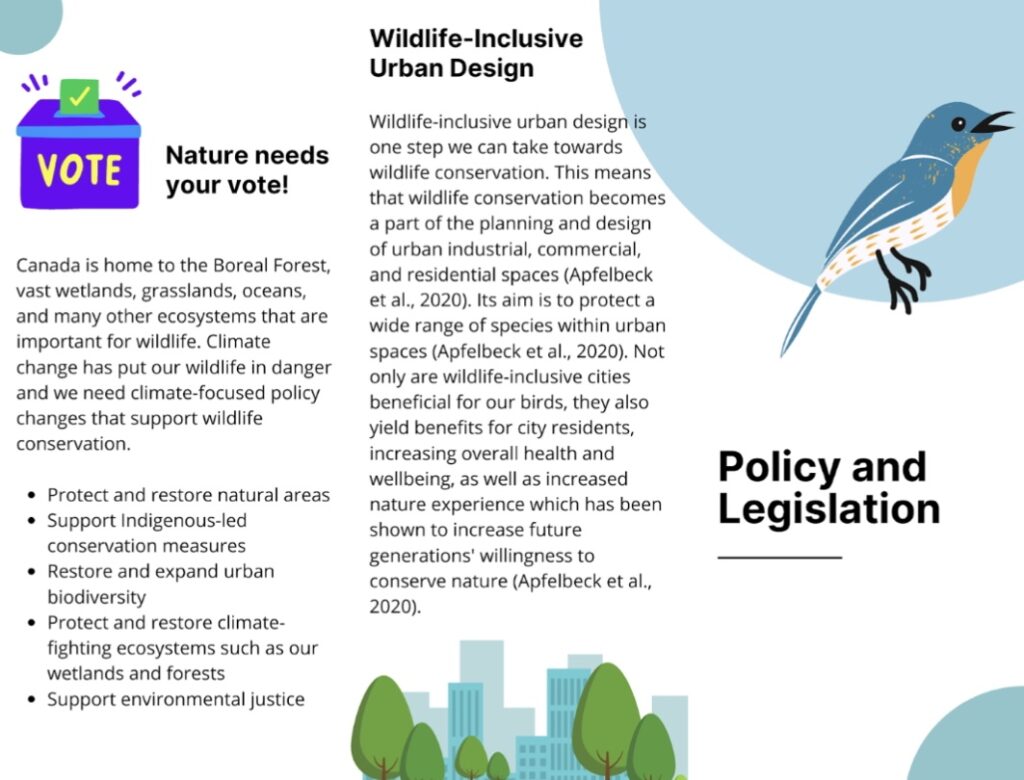
Information retrieved from: https://naturecanada.ca/defend-nature/how-you-help-us-take-action/nature-platform/ & https://doi.org/10.1016/j.landurbplan.2020.103817
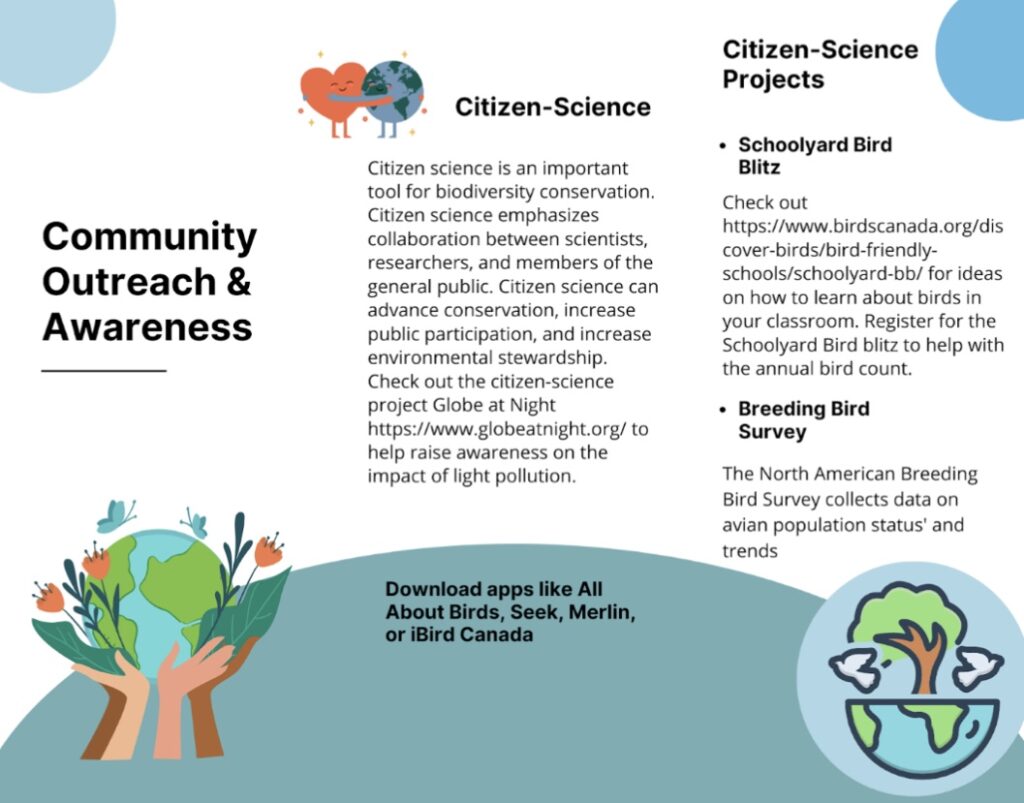
Information retrieved from: Soanes, et al., 2020 & https://www.birdscanada.org/discover-birds/bird-friendly-schools/ schoolyard-bb/
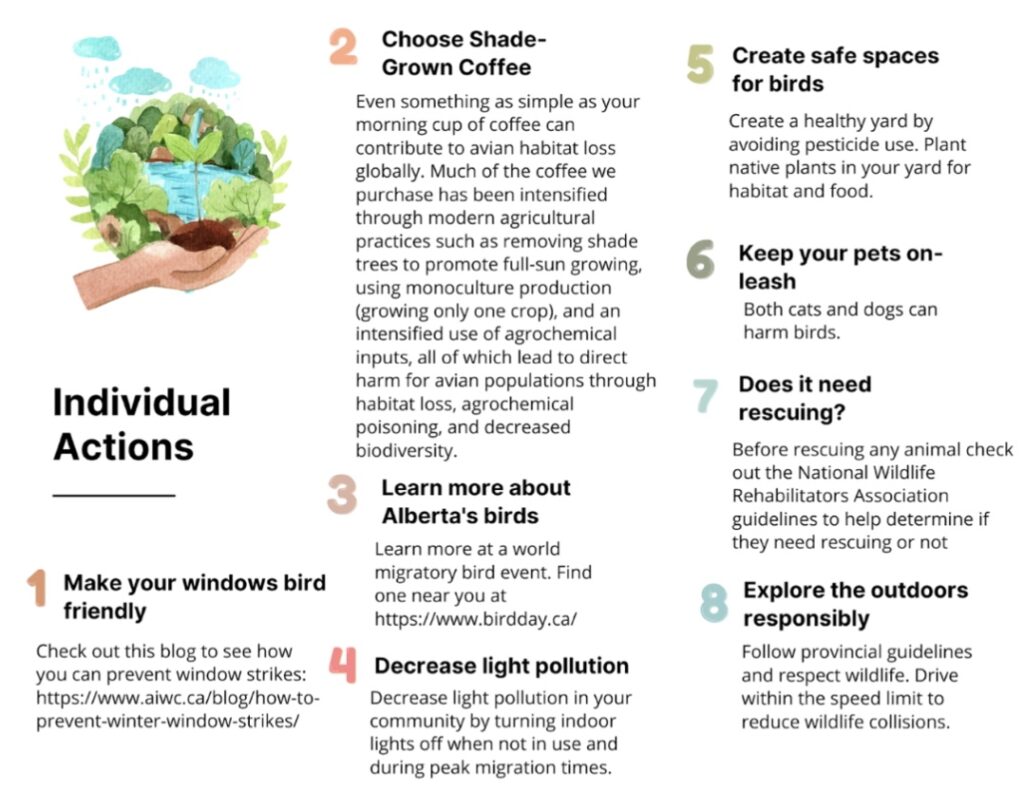
Information retrieved from: https://www.birdday.ca/discover, https://www.birdday.ca/defend, https:// www.nwrawildlife.org/page/Found_Injured_Wildlife & https://www.birdscanada.org/you-can- help/guide/
References
- Woodroffe, Rosie, Simon Thirgood, and Alan Rabinowitz. “The impact of human-wildlife conflict on natural systems.” CONSERVATION BIOLOGY SERIES-CAMBRIDGE- 9 (2005): 1.
- “Climate Change to Fuel Increase in Human-Wildlife Conflict, UW Biologist Says.” UW News. Accessed November 22, 2022. https://www.washington.edu/news/2021/07/29/human-wildlife-conflict-climate/.
- “Climate Change to Fuel Increase in Human-Wildlife Conflict, UW Biologist Says.” UW News.
- “Climate Change to Fuel Increase in Human-Wildlife Conflict, UW Biologist Says.” UW News.
- Cadieux, Philippe, Yan Boulanger, Dominic Cyr, Anthony R. Taylor, David T. Price, Péter Sólymos, Diana Stralberg, Han YH Chen, Aaron Brecka, and Junior A. Tremblay. “Projected effects of climate change on boreal bird community accentuated by anthropogenic disturbances in western boreal forest, Canada.” Diversity and Distributions 26, no. 6 (2020): 668-682.
- Philippe, Boulanger, Cyr, Taylor, Price, Sólymos, Stralberg, Chen, Brecka, and Tremblay. “Projected effects of climate change”
- Niemuth, N. Kathleen, K. F., & Reynolds, R. E. (2014). Waterfowl conservation in the US Prairie Pothole Region: confronting the complexities of climate change. PloS One, 9(6), e100034–. https://doi.org/10.1371/journal.pone.0100034
- van Vliet, Heidi EJ, Bridget JM Stutchbury, Amy EM Newman, and D. Ryan Norris. “The impacts of agriculture on an obligate grassland bird of North America.” Agriculture, Ecosystems & Environment 287 (2020): 106696.
- Apfelbeck, Beate, Robbert PH Snep, Thomas E. Hauck, Joanna Ferguson, Mona Holy, Christine Jakoby, J. Scott MacIvor, Lukas Schär, Morgan Taylor, and Wolfgang W. Weisser. “Designing wildlife-inclusive cities that support human-animal co-existence.” Landscape and Urban Planning 200 (2020): 103817.
- Beate, Snep, Hauck, Ferguson, Holy, Jakoby, MacIvor, Schär,Taylor, and Weisser. “Designing wildlife-inclusive cities”

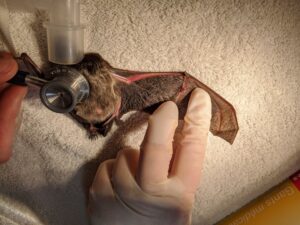
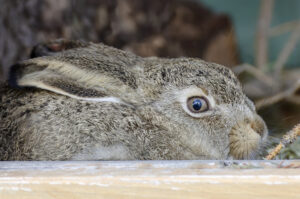
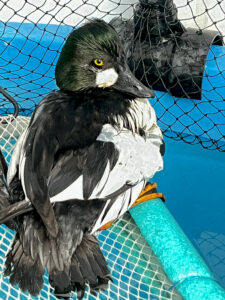


1 thought on “Making a positive Impact: Human-Wildlife Co-Existence”
This was beautiful Admin. Thank you for your reflections.